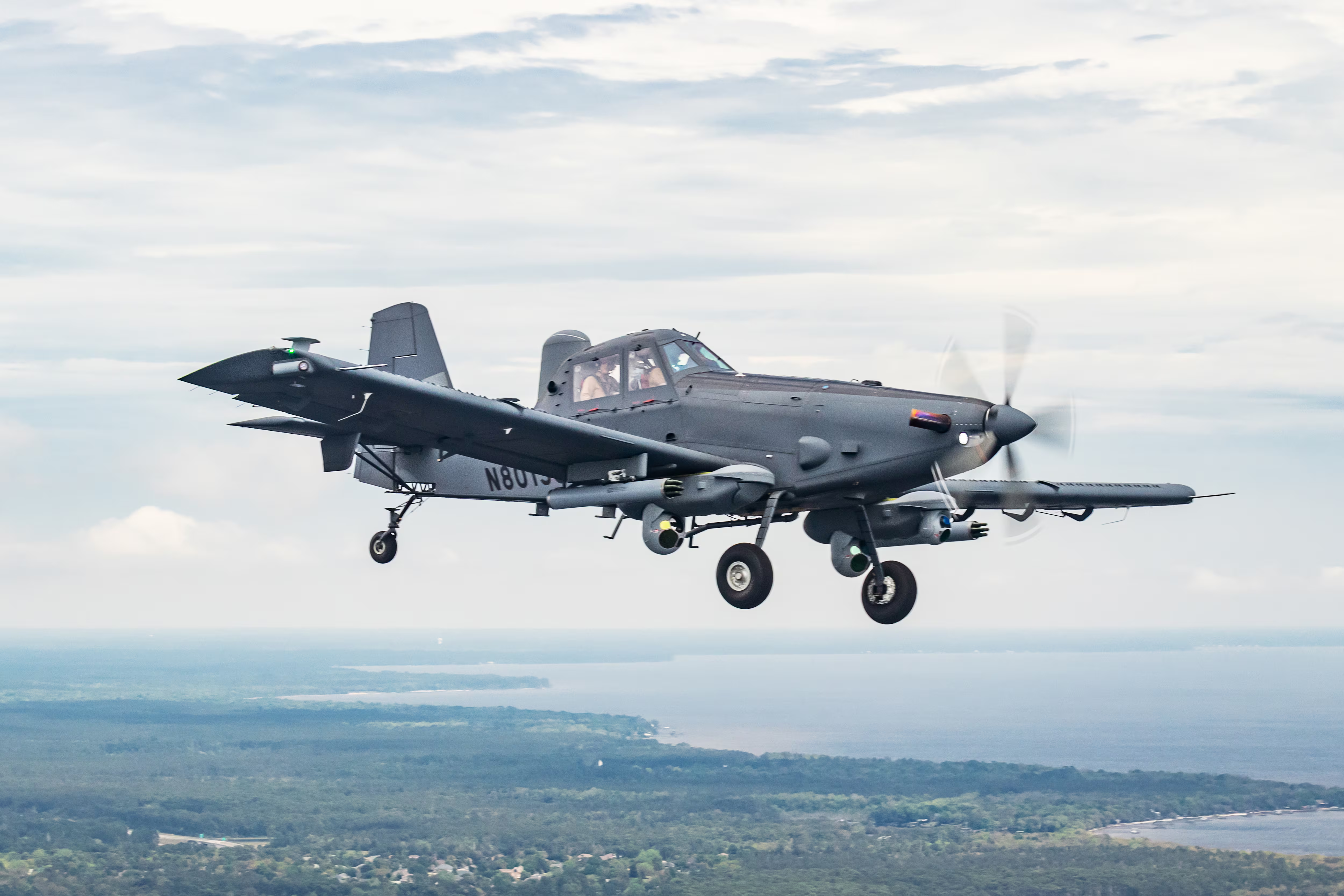The Air Force has tentatively picked Will Rogers Air National Guard Base, Oklahoma, as its future training hub for special operations airmen learning to fly armed overwatch planes.
If officially selected, the base would change its training unit for MC-12 Liberty reconnaissance aircraft into one that brings together Guardsmen and active duty airmen on the new armed overwatch fleet. The Air Force plans to replace its 13 aging MC-12s with the OA-1K — which L3Harris and Air Tractor initially marketed as the AT-802U Sky Warden.
“Will Rogers ANGB will receive 28 AT-802Us and about 80 personnel to support the mission of the 310th Special Operations Squadron,” the service said in a Friday press release. “The squadron will relocate from Cannon Air Force Base, New Mexico, to Will Rogers ANGB, creating an active association with the 185th SOS.”
First, Rogers must pass a review of its ability to meet the fleet’s operational needs and how the new planes could affect existing missions, plus an environmental impact study, before the Air Force makes a final decision. Those are slated to run from spring to fall 2023.
“Training will require munitions, appropriate munitions storage areas, munitions airmen for support and range airspace that supports live fire for the OA-1K,” Air Force Special Operations Command spokesperson Lt. Col. Becky Heyse told Air Force Times in November. “Also, with every squadron planned to receive a simulator, there will also need to be facilities to support the simulators.”
No other installations are in the running to host the schoolhouse. United States Special Operations Command boss Gen. Richard Clarke has suggested that an additional four operational squadrons of 15 planes could be the right size.
OA-1Ks will replace other special operations platforms as the go-to plane for close air support, precision strike, and armed intelligence, surveillance and reconnaissance in counterterror missions. The military plans to buy as many as 75 of the propeller-driven, fixed-wing aircraft under a contract worth up to $3 billion.
The Air Force expects to run tests on the airframe until summer 2024, and have its instructors trained to teach students by fall 2025. The OA-1K fleet is slated to be fully operational in 2029 and employ nearly 200 pilots.
Rachel Cohen is the editor of Air Force Times. She joined the publication as its senior reporter in March 2021. Her work has appeared in the Washington Post, the Frederick News-Post (Md.), Air and Space Forces Magazine, Inside Defense, Inside Health Policy and elsewhere.








